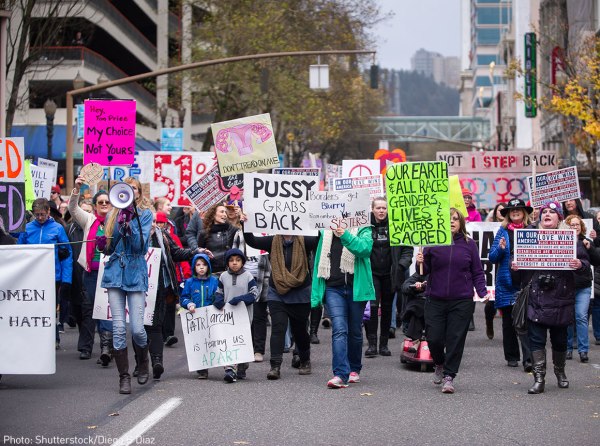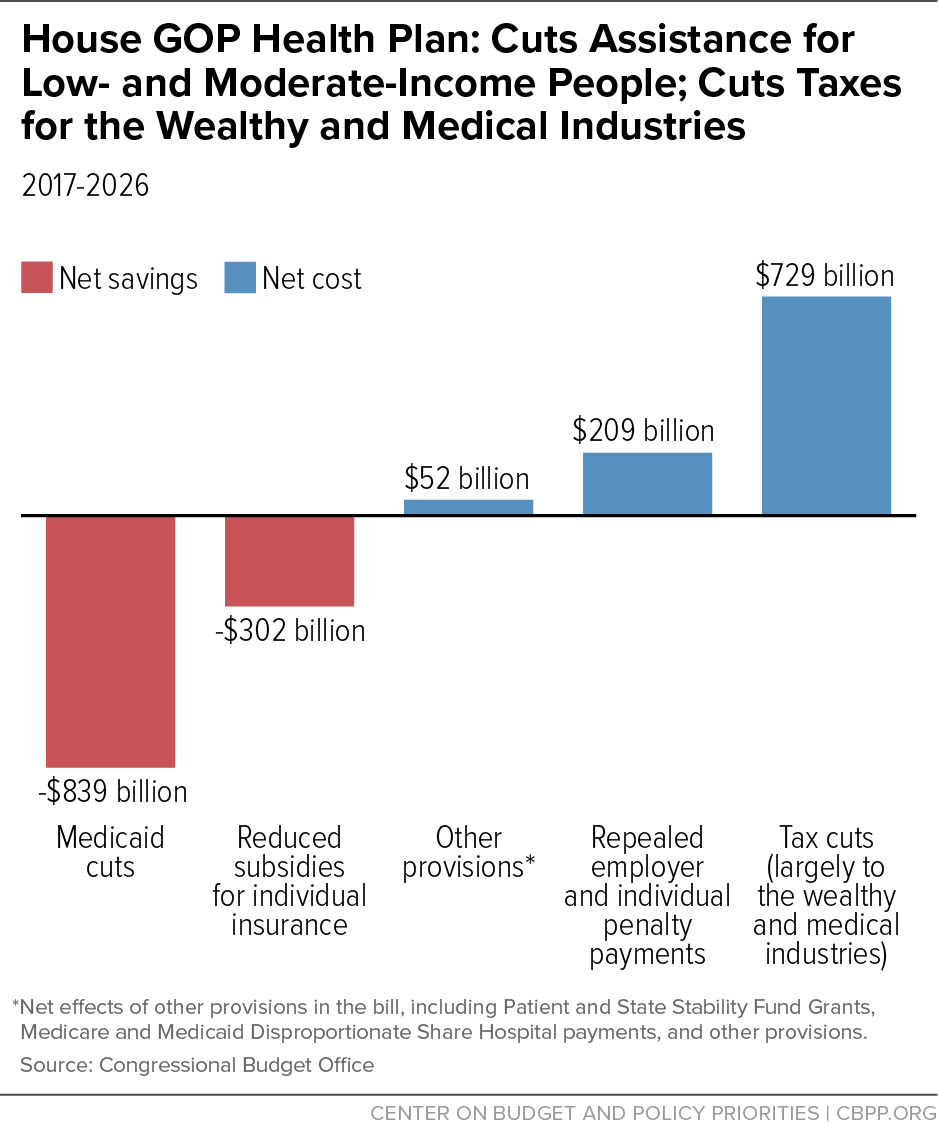The Working Families Flexibility Act (H.R. 1180), introduced February 16, 2017, by Rep. Martha Roby (R-Ala.), would further erode overtime protections for American workers. Millions of workers are working overtime but are not getting paid for it.1 This is, in part, the result of outdated overtime rules governing workers' eligibility for overtime pay. The erosion of overtime protections has led to workers earning less money while working longer hours, and has created a generally overworked middle class. The way to address this issue is to strengthen overtime protections—not, as H.R. 1180 does, create a new employer right to avoid paying workers overtime.
Background
The Fair Labor Standards Act (FLSA) requires employers to pay certain employees time-and-a-half (or 1.5 times) their regular pay rate for each hour of work per week beyond 40 hours. For nearly 80 years, this system has struck a successful balance by giving employers a way to get work done at a fair price while protecting employees' time with their families. Most hourly workers are guaranteed the right to overtime pay, while salaried workers' eligibility is based on their pay and the nature of their duties. Most salaried workers who earn less than $455 per week ($23,660 annually) are automatically eligible for overtime pay, regardless of their job duties. Salaried workers who earn $455 per week or more may be exempt from guaranteed overtime if their job duties fall into one of three categories: professional, administrative, or executive. The duties associated with these categories involve supervisory responsibilities or a high degree of control over their time and tasks because these exemptions from guaranteed overtime were intended to apply to only a small segment of workers who perform relatively high-level work with a salary that reflects this.
However, the salary threshold has been updated only once since the 1970s—in 2004, when it was set too low. As a result, the share of the salaried workforce that earns less than the threshold has shrunk significantly. Consider that in 1979 nearly 12 million salaried workers had overtime protections. But today, with a 50 percent larger workforce, only 3.5 million salaried workers are automatically protected.2 Workers who have lost overtime protection based on an outdated salary threshold have lost not only the right to be paid time-and-a-half for their overtime—they have lost the right to be paid for it at all. And now that overtime hours do not cost employers extra money, they are more likely to require workers to work longer hours. No wonder so many workers feel that they need "flexibility" to balance family responsibilities. Employers have no incentive not to require those workers to work extra hours.
Obama-era rule
The deterioration of overtime protections led to the promulgation of a Department of Labor rule to restore the salary threshold to a meaningful level. The rule—scheduled to take effect on December 1, 2016, but blocked by an injunction that is on appeal in the U.S. Court of Appeals for the Fifth Circuit—raised the threshold from $455 to $913 per week (or from $23,660 to $47,476 for a year-round worker). The rule would directly benefit a wide range of workers including 6.4 million women and 4.2 million parents.3
Working Families Flexibility Act
The Working Families Flexibility Act would amend the FLSA to allow private-sector employers to "compensate" hourly workers with compensatory time off in lieu of overtime pay. Contrary to proponents' claims, the bill does not create employee rights, it takes them away. It does create a new employer right—the right to delay paying any wages for overtime work for as long as 13 months. The legislation forces workers to compromise their paychecks for the possibility—but not the guarantee—that they will get time off from work when they need it.
Congressional Republicans have introduced versions of this legislation for the past 20 years:
- H.R. 1, the Working Families Flexibility Act of 1997, which sought to amend the FLSA to extend comp time to the private sector.
- H.R. 1119, the Family Time Flexibility Act, which proposed extending comp time to the private sector in 2003.
- H.R. 6025, the Family Friendly Workplace Act, a nearly identical comp-time bill introduced in 2008.
- H.R. 933, a reintroduction of the Family Friendly Workplace Act in 2009.
Despite the marketing, none of these bills would have resulted in greater flexibility for workers. Instead, they would have simply allowed employers to avoid paying overtime. Workers depend on the wage and overtime protections in the FLSA. They should not have to sacrifice earned wages to have flexibility.
FLSA already provides flexibility
The FLSA is the original family-friendly law. It permits a wide range of flexible work schedules. For example, under current law, public and private employers may choose to allow their workers to vary the start or end of their workday, including on an ad-hoc basis. Employers may also choose to permit employees to schedule four 10-hour days with one workday off, or arrange nine-hour workdays with a day off every other week. All of these arrangements are permissible under the FLSA. Employers can and should take advantage of the flexibility the current law already provides.
Perhaps most revealing, under the FLSA, an employer may pay an employee for overtime worked in a given week and then, to reward the employee for putting in extra time, may schedule future unpaid time off. The result would be that the total annual hours worked and income received would be the same as under Rep. Roby's comp time in lieu of overtime proposal, but workers would not have to wait for up to 13 months to be paid for the overtime hours. In other words, everything the comp time bill purports to provide for workers is actually available under the FLSA.
The "flexible" arrangements of the comp time bill could be offered today, with no new employer rights, duties, paperwork, recordkeeping, causes of action, or oversight.
The bill will reduce worker income
The Working Families Flexibility Act would result in less money in employees' paychecks, even when they do work overtime. Many employees rely on overtime pay to earn enough money to make ends meet every month—but this bill would allow employers to avoid paying overtime premiums when employees work extra hours, by giving them "comp time" to bank for future use instead. This means employees will still be working longer hours, but they will be receiving less in their paychecks at the time they work the longer hours. They will essentially be loaning their employer their overtime pay (at no interest) for as long as 13 months.
Under the legislation, an employee may decline to accept comp time in lieu of overtime. It follows that employers will assign overtime preferentially to those who accept comp time, thereby depriving the workers who need the extra cash of opportunities for overtime work. So, not only will the employees who receive comp time instead of overtime pay earn less, so will the employees who refuse comp time and insist on being paid overtime pay.
The bill would give employers—not employees—the right to control comp time
Nothing in the bill guarantees a worker that she will be able to use accrued comp time hours when she needs to access them. Under the legislation, an employer may deny a worker's request for comp time if it "unduly disrupts the operations of the employer." This broad standard for denying overtime provides employers with enormous control over employees' access to comp time.
Furthermore, because the bill provides inadequate penalties, there is little incentive for unscrupulous employers to provide meaningful access to comp time. (An employer is liable for only the wages owed as well as liquidated damages reduced by each hour of comp time used by the employee.) Instead of providing meaningful access to comp time, employers could simply assert undue disruption to their operations in response to a request for a comp time hour and deny a worker the requested time off and continue to avoid paying overtime wages. The bill does not require employers to pay employees interest on their comp time pay, which employees would receive if they put their overtime pay in the bank, so the employer gets to keep any interest earned on the wages held as well.
The bill would lead to unpredictable schedules for workers
Why comp time won't work in the private sector
Proponents of comp time in lieu of overtime pay argue that public-sector employees receive this benefit and it should be extended to private-sector workers. However, there is little information available on the use of and experience with comp time in state and local governments, making it impossible to determine whether workers are able to meaningfully access comp time under the system. Furthermore, there are important differences between the public-sector workforce and the private-sector workforce that make comp time riskier for private-sector workers. Public-sector workers can't be fired except for good cause, they have administrative appeal rights, and they have significantly higher rates of union representation. These considerations make them more likely to challenge an employer's decision denying them the use of comp time and less likely to be coerced into agreeing to comp time in lieu of overtime pay. And, while nothing in this legislation provides any guarantee that a worker will ever be able to take the comp time that she accrues when she needs it, private-sector workers also face a real danger of losing comp time accrued in the event of a business failure. According to the Small Business Administration, in 2013, over 400,000 small businesses closed.4 Nothing in the legislation provides workers whose employer goes out of business with a guarantee to receive payment for accrued comp time. The employer is not required to put sufficient money in escrow or to buy a bond to guarantee payment in case of closure or bankruptcy.
Conclusion
At no risk to the employee, the FLSA already allows an employer to grant time off to employees who work overtime. H.R. 1180 adds nothing but delay and risk to the employees' right to receive extra compensation when they work more than 40 hours in a week.
Endnotes
1. Ross Eisenbrey and Lawrence Mishel, The New Overtime Salary Threshold Would Directly Benefit 13.5 Million Workers, Economic Policy Institute report, August 2015.
2. Ross Eisenbrey, Testimony before the United States Senate Committee on Small Business and Entrepreneurship, May 11, 2016. Current statistics referred to are as of 2014.
3. Ross Eisenbrey and Will Kimball, The New Overtime Rule Will Directly Benefit 12.5 Million Working People, Economic Policy Institute report, May 2016.
4. U.S. Small Business Administration Office of Advocacy, "Frequently Asked Questions," June 2016.
-- via my feedly newsfeed
 and continuing with spontaneous protests at airports after the travel ban was announced to a continuing round of marches and rallies focused on immigration, defending the Affordable Care Act, women's rights. Over the next few months, more are planned, including a "Trump Taxes March" (April 15), a "March for Science" (April 22), the People's Climate Change March (April 29), an "Immigrants' March" (May 6), and the annual Pride march (June 11). During the February Congressional recess, we also saw many more local actions, especially at legislators' town hall meetings, where senators and representatives were challenged by constituents to defend their support for Trump's nominees and implored to preserve Obamacare, among other things.
and continuing with spontaneous protests at airports after the travel ban was announced to a continuing round of marches and rallies focused on immigration, defending the Affordable Care Act, women's rights. Over the next few months, more are planned, including a "Trump Taxes March" (April 15), a "March for Science" (April 22), the People's Climate Change March (April 29), an "Immigrants' March" (May 6), and the annual Pride march (June 11). During the February Congressional recess, we also saw many more local actions, especially at legislators' town hall meetings, where senators and representatives were challenged by constituents to defend their support for Trump's nominees and implored to preserve Obamacare, among other things.
